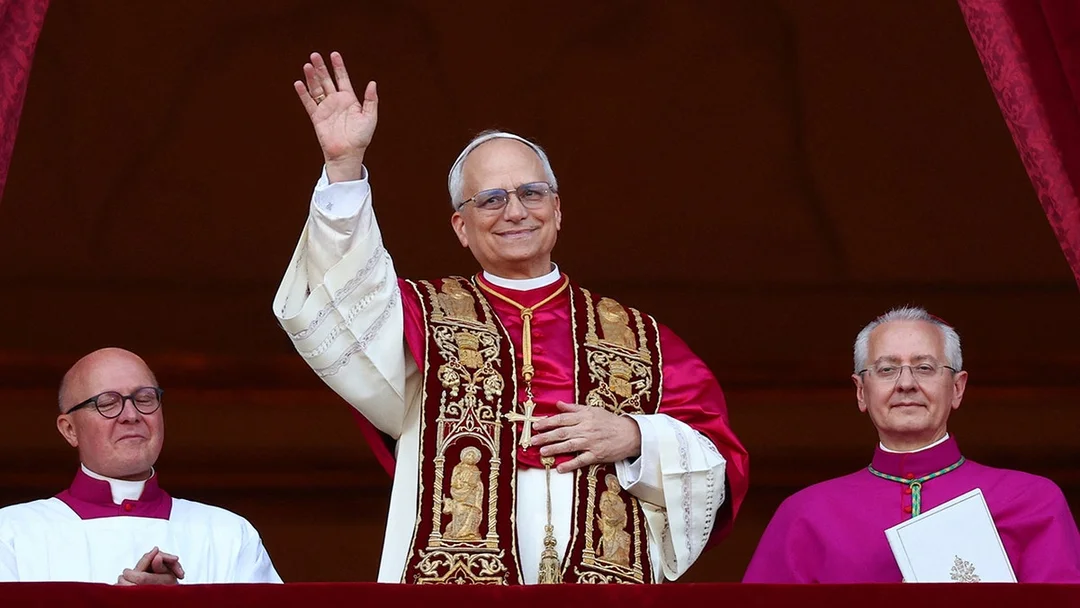
Can the First American Pope Bridge Political Divides?
In a historic turn of events that has captivated the world, Robert Francis Prevost, now Pope Leo XIV, has become the first American to lead the Catholic Church. This election not only marks a milestone for the U.S. but also raises intriguing questions about its impact on a deeply polarized political landscape, where faith and policy often collide.
Governor Gavin Newsom of California was among the first to respond, issuing a statement praising Pope Leo XIV's emphasis on human dignity, care for the poor, and the pursuit of common good. In his remarks, Newsom highlighted the new pope's inaugural address, which reminded the faithful that 'God loves each and every person' and urged a return to values that bridge divides. This message resonates amid ongoing debates in American society, where issues like immigration and social justice have fueled tensions.
Analysis of Pope Leo XIV's past social media activity, as reported by CNN, reveals a pattern of reposts critical of key political figures. Before his elevation, an X account linked to him shared content condemning Vice President JD Vance's views on prioritizing American citizens over migrants, echoing a January Fox News interview where Vance defended a 'Christian concept' of loving one's family first. Additionally, the account reposted articles criticizing the Trump administration's immigration policies, including the wrongful deportation of Kilmar Abrego Garcia in March, which a judge later ordered reversed. These actions align with former Pope Francis's February letter denouncing mass deportations as violations of human dignity. Such stances suggest Pope Leo XIV may continue advocating for the vulnerable, potentially clashing with conservative elements in U.S. politics.

The election comes at a time of fracture within the American Catholic Church, as detailed in recent reports. With a significant Catholic presence in Trump's cabinet and the Supreme Court, the church's influence in public life is undeniable, yet it faces internal divisions. Pope Leo XIV, hailing from Chicago, inherits a legacy of tension between progressive and conservative factions. Observers note that his priorities, similar to those of Pope Francis, could counter the rise of right-wing Catholicism in Washington. For instance, right-wing media outlets have already expressed skepticism about his orthodoxy, citing his criticisms of Trump-era policies. Despite this, figures like the Rev. Thomas J. Reese suggest the new pope might foster dialogue, emphasizing justice and peace in a fractured world.
As the U.S. Church navigates its role in global Catholicism, Pope Leo XIV's American roots could symbolize maturity and unity. Yet, his history of engaging with political issues raises questions about whether he can remain neutral or if he'll actively challenge policies. This balance will be crucial in unifying a church where, as Archbishop Timothy P. Broglio stated, the pope now belongs to all people of good will.
In summary, the ascension of Pope Leo XIV represents a pivotal moment that could either heal divides or intensify them, depending on how his vision intersects with American politics. What role will faith play in bridging these gaps? We invite readers to share their thoughts in the comments below and discuss how this historic event might shape the future.
Related issues news
Is Leo XIV the first American pope?
Cardinal Robert Francis Prevost – now known as Pope Leo XIV — is the first pope from the United States. The 69-year-old from Chicago is known as a leader with global experience.
When was Pope Leo XIV made a cardinal?
He is 69 years old, and he spent most of the last 40 years in the country. He is a binational, so you could say that he has spent more time in Latin America than in the United States, the country of his birth.” “He was named a cardinal in 2023; before that, he had been named the archbishop of Chiclayo.
Where did the new Pope live?
While most popes choose to live in the Apostolic Palace, Pope Francis chose to live in the Vatican guesthouse. The Vatican shared Pope Francis's choice of residence about two weeks after he was elected.
When was Pope Francis elected?
He became the archbishop of Buenos Aires in 1998 and was created a cardinal in 2001 by Pope John Paul II. Following the resignation of Pope Benedict XVI on 28 February 2013, a papal conclave elected Bergoglio as his successor on 13 March 2013. He chose Francis as his papal name in honor of Saint Francis of Assisi.